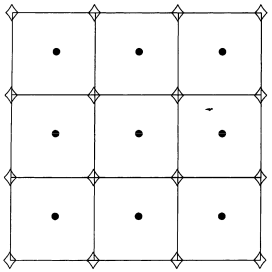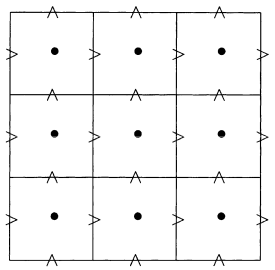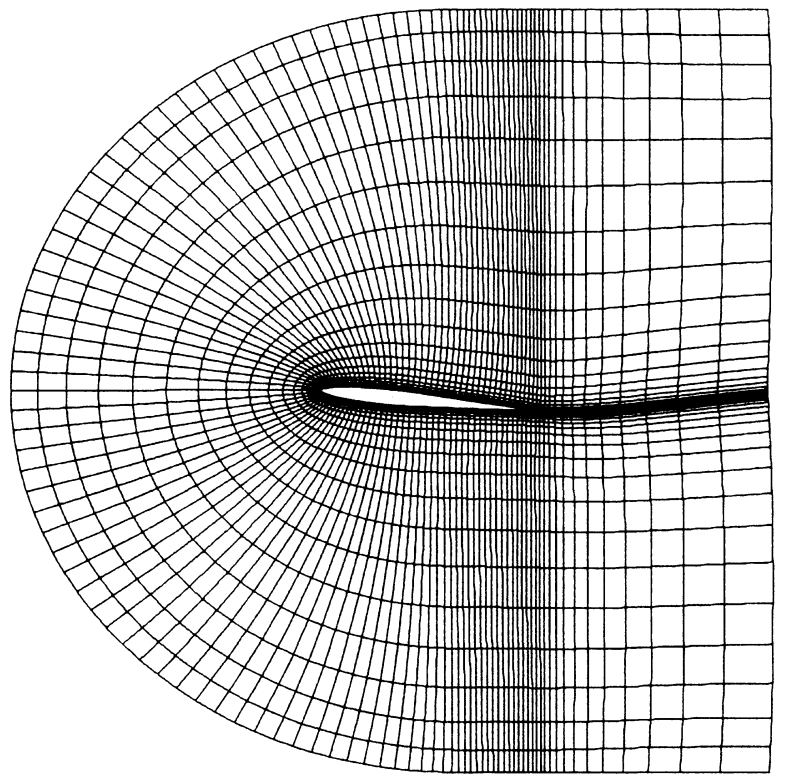2021-10-08 Finite Difference in 2D¶
Last time¶
Accuracy vs cost tradeoffs for ODE integrators
Stiff and non-stiff problems, discussion of costs
Today¶
FD methods in 2D
Cost profile
The need for fast algebraic solvers
using Plots
using LinearAlgebra
using SparseArrays
using Zygote
default(linewidth=4)
function newton(residual, jacobian, u0; maxits=20)
u = u0
uhist = [copy(u)]
normhist = []
for k in 1:maxits
f = residual(u)
push!(normhist, norm(f))
J = jacobian(u)
delta_u = - J \ f
u += delta_u
push!(uhist, copy(u))
end
uhist, normhist
end
function plot_stability(Rz, title; xlims=(-2, 2), ylims=(-2, 2))
x = LinRange(xlims[1], xlims[2], 100)
y = LinRange(ylims[1], ylims[2], 100)
heatmap(x, y, (x, y) -> abs(Rz(x + 1im*y)), c=:bwr, clims=(0, 2), aspect_ratio=:equal, title=title)
end
plot_stability (generic function with 1 method)
Extending advection-diffusion to 2D¶
1 dimension¶
Cell Peclet number \(\mathrm{Pe}_h = \frac{\lvert w \rvert h}{\kappa}\)
\(\mathrm{Pe}_h \lesssim 1\) avoids oscillations
\(\mathrm{Pe}_h \gtrsim 1\) is non-stiff for time-dependent model
Centered versus upwind for advection
Need uniformly bounded \(\kappa \ge \epsilon > 0\)
“Strong form” not defined at discontinuities in \(\kappa\)
Works okay using divergence form and fluxes at staggered points
2 dimensions¶
\(\Omega\) is some well-connected open set (we will assume simply connected) and the Dirichlet boundary \(\Gamma_D \subset \partial \Omega\) is nonempty.
Finite difference methods don’t have an elegant/flexible way to specify boundaries
We’ll choose \(\Omega = (-1, 1) \times (-1, 1)\)
On finite difference grids¶
Non-uniform grids can mesh “special” domains
Rare in 3D; overset grids, immersed boundary methods
Concept of staggering is complicated/ambiguous



Time-independent advection-diffusion¶
Advection¶
If we choose divergence-free \(\mathbf w\), we can use the stencil
Diffusion¶
When would you trust this decomposition?
If we have constant \(\kappa\), we can write
\[\begin{split} -\kappa \nabla\cdot \nabla u \approx \frac{\kappa}{h^2} \begin{bmatrix} & -1 & \\ -1 & 4 & -1 \\ & -1 & \end{bmatrix} \!:\! \begin{bmatrix} u_{i-1, j+1} & u_{i, j+1} & u_{i+1,j+1} \\ u_{i-1, j} & u_{i, j} & u_{i+1,j} \\ u_{i-1, j-1} & u_{i, j-1} & u_{i+1,j-1} \\ \end{bmatrix} \end{split}\]
Advection-diffusion in code¶
function advdiff_matrix(n; kappa=1, wind=[1, 1]/sqrt(2))
h = 2 / n
rows = Vector{Int64}()
cols = Vector{Int64}()
vals = Vector{Float64}()
idx(i, j) = (i-1)*n + j
stencil_advect = [-wind[1], -wind[2], 0, wind[1], wind[2]] / h
stencil_diffuse = [-1, -1, 4, -1, -1] * kappa / h^2
for i in 1:n
for j in 1:n
if i in [1, n] || j in [1, n]
push!(rows, idx(i, j))
push!(cols, idx(i, j))
push!(vals, 1.)
else
append!(rows, repeat([idx(i,j)], 5))
append!(cols, [idx(i-1,j), idx(i,j-1), idx(i,j), idx(i+1,j), idx(i,j+1)])
append!(vals, stencil_advect + stencil_diffuse)
end
end
end
sparse(rows, cols, vals)
end
advdiff_matrix (generic function with 1 method)
Spy the matrix¶
A = advdiff_matrix(10, wind=[1, 3], kappa=.1)
clim = norm(vec(A), Inf)
spy(A, marker=(:square, 3), c=:bwr, clims=(-clim, clim))
A = advdiff_matrix(20, wind=[0, 0], kappa=.1)
ev = eigvals(Matrix(A))
scatter(real(ev), imag(ev))
Plot a solution¶
n = 100
x = LinRange(-1, 1, n)
y = x
f = cos.(pi*x/2) * cos.(pi*y/2)'
heatmap(x, y, f, aspect_ratio=:equal)
A = advdiff_matrix(n, wind=[3,1], kappa=.01)
u = A \ vec(f)
heatmap(x, y, reshape(u, n, n), aspect_ratio=:equal)
What happens when advection dominates?
As you refine the grid?
Cost breadown and optimization¶
using ProfileSVG
function assemble_and_solve(n)
A = advdiff_matrix(n)
x = LinRange(-1, 1, n)
f = cos.(pi*x/2) * cos.(pi*x/2)'
u = A \ vec(f)
end
@profview assemble_and_solve(600)
What’s left?¶
Symmetric Dirichlet boundary conditions
Symmetric Neumann boundary conditions
Verification with method of manufactured solutions
Non-uniform grids
Upwinding for advection-dominated problems
Variable coefficients
Time-dependent problems
Fast algebraic solvers